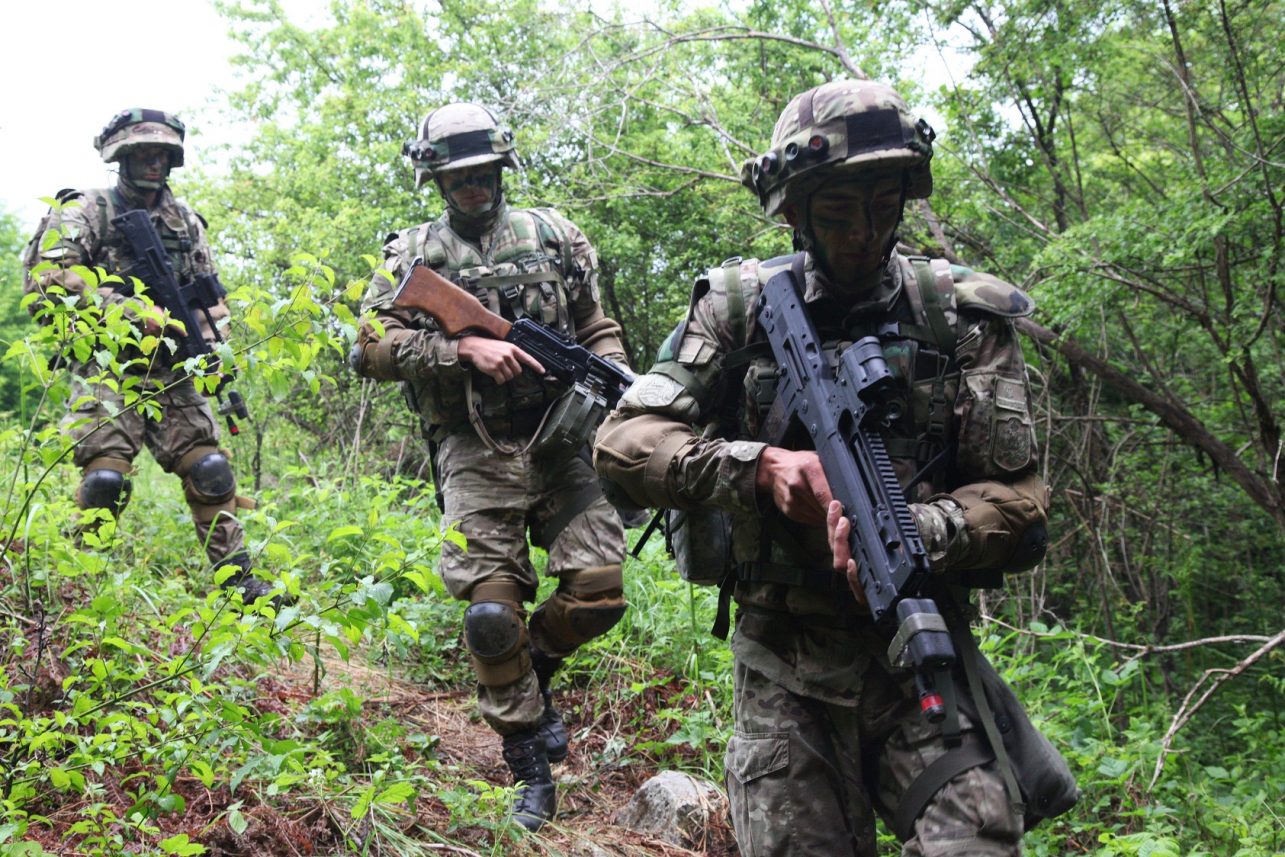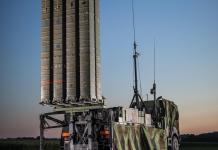What are the implications of the rising attacks on the minorities, that is, Hindus and Sikhs, both from the Union Territory of Jammu and Kashmir and those from the outside working for the government and in the blue-collar jobs?
Is India’s unity and integrity at stake, even after the abrogation in 2019 of Article 370 that had promoted and glorified separatism?
Answers to these questions should be preceded by identifying some hard facts.
In the post abrogation (of Article 370 of the Indian constitution) phase, the number of militant attacks on the security forces (SF), forced bandhs, stone-pelting and incursions from across the border have declined, but there has not been a significant difference with regard to the attacks on the civilians, particularly non-Muslims.
In that sense, the situation on the ground in Kashmir is far from normal, contrary to what the Modi government says.
Kashmir Valley has witnessed at least 16 targeted killings, including police officials, teachers and sarpanches, since January this year. Another estimate says that between October 2021 and 23 April 2022, over 23 civilians have been killed in terror attacks.
According to J&K Police data, 17 of the 23 civilians were local residents, including sarpanches, and six “outsiders”, people from other parts of the country who either worked as laborers in fields or construction sites or in shops as helpers.
According to partial data collated by the South Asia Terrorism Portal (SATP), Jammu and Kashmir (J&K) registered 36 fatalities in the civilian category in the year 2021. The portal said, “Significantly, after reaching an 11-year high of 86 in 2018, fatalities in this category had declined to 42 in 2019 and further down to 33 in 2020, indicating another spike in violence targeting civilians.”
This marginal deterioration in the security situation with regard to the civilian population has emerged despite the fact that the Security Force (SFs) have continued to maintain their supremacy against the terrorists on the ground.
Both official and SATP databases say that while the number of security personnel killed in action has fallen from 91 in 2018 to 42 in 2021, the reverse figure has increased. In 2021, 193 militants were killed. In 2020, 232 militants were gunned down.
According to the SATP portal, while the Security Forces (SF) terrorist kill ratio in the current year at 1:4.8 (eight SF personnel and 39 terrorists), it was 1:3.75 during the corresponding period last year (eight SF personnel and 30 terrorists). The ratio was at 1:4.2 through 2021 (45 SF personnel and 193 terrorists). It was at 1:4.14 in 2020 (56 SF personnel and 232 terrorists).
The SFs also arrested 289 terrorists in 2021, in addition to 300 in 2020. And, according to the latest available figure, 105 terrorists have already been arrested in 2022.
Similarly, incidents of stone-pelting, at 1,999 in 2019, fell steeply to 255 in 2020. In the year 2021, there is no data available on this number, possibly because there has been no major incident.
The above statistics should also be seen in the context of the fact that the Line of Control (LoC) with Pakistan is much quieter these days compared to what was the situation in the past. In fact, there has been just one instance of the violation of the ceasefire agreement over the last six months. This is against CFA violations at 2,140 in 2018, 3,479 in 2019 and 5,133 in 2020.
The absence of ceasefire violations at the LoC implies that Pakistan, plagued by its serious internal problems, is no longer active in violating the CFA so as to help cover the movement of terrorists across the border/LoC from the Pakistani side.
Given these broad trends, the recent surge in civilian killings, more particularly in targeted killings and attacks on non-locals and non-Muslims by the terrorists, can be seen as a desperate move to reverse the trajectory in Kashmir.
And it is done mostly by the militants or radical Islamists belonging to the valley. This is not to suggest that “foreign terrorists” are not there in Kashmir, but to stress the fact that the terrorists’ ranks are filled mostly by the locals.
Going by the J&K Police, an estimated 142 youngsters joined the terrorist ranks in the J&K in 2021, in addition to 178 in 2020 and 117 in 2019.
And what is worse, as J&K Director General of Police Dilbag Singh says, there are now grave and dangerous challenges from Over Ground Workers (OGWs) and it is “very difficult to identify them.” And here, the Pakistani ISI may be playing a role in manipulating not only the minds of the Kashmiri youth but also exploiting overall “the religious fault lines” that exist overall within India.
Terror In Kashmir
In my considered view, the nature of the militancy or terrorism in Kashmir has undergone a fundamental change in Kashmir after the abrogation of Article 370. What the abrogation has done is that it has effectively closed the door for any international involvement (including that of Pakistan) in changing the status of Kashmir as Indian territory.
Talks or negotiations, if at all, can now only be on the fate of the territories of the erstwhile state of Jammu and Kashmir (as it existed in 1947) that are under the control of Pakistan and China.
Even otherwise, given the wobbly political and economic position of Pakistan at the moment, militants in Kashmir will love to remain in India rather than be a part of Pakistan.
All told, in India their economic and civil status are far superior to that of an ordinary Muslim in Pakistan, let alone those living in Pakistan occupied Kashmir (PoK). See the prosperity of Srinagar as a city in recent years. See the pace at which the fashionable houses are being built. See the number and types of motor vehicles/cars plying in Srinagar and adjoining cities.
In 2021, GDP per capita for Jammu & Kashmir was 146,079 INR (₹ or rupees), as against ₹ 98,418 of Madhya Pradesh, ₹ 82,182 of Meghalaya, ₹ 86,801 of Assam, ₹ 84,746 of Manipur, ₹ 75,739 of Jharkhand, ₹ 65,431 of Uttar Pradesh, and ₹ 46,292. In 2012, the GDP per capita of Jammu & Kashmir was ₹ 68,375. That means that it has been growing at an average annual rate of 8.91% over the last decade.
Needless to say that the Government of India’s contribution to the socio-economic development of Kashmir has been immense.
Just see the ratio of universities, medical colleges and big developmental projects to the population of Kashmir and compare it with many other states of the country to realize the importance of the point that is being made.
What needs to be highlighted here is that the Government of India has never discriminated against the people of the valley who are essentially Muslims. Even after the abrogation of Article 370, there has not been any attempt whatsoever to change the demographic composition of the valley.
In the last Census of 1941 before the British left India, the Muslim population in the valley was 95.97 percent. Though no census in the recent past has been conducted (the last one was in 2011), the government website of Jammu and Kashmir says that Muslims constitute 97 percent of the population in Kashmir Valley.
Hindus are about two percent and a large majority of them are “Megh Bhagats” (Scheduled Castes whose primary occupation is farming). Kashmiri Pandits, unique to the valley, were a dominant group in the state government and educational institutions until the radical Islam became fashionable in the valley in the late 1980s, with the active connivance of the state governments of the time (be it elected representatives or thousands of the government employees).
In contrast, just see what has happened in PoK. The region has hardly any Hindu or Sikh families. Most of the Hindus and Sikhs in the region were either massacred or fled to this side of the border following the ethnic massacres after the partition of India.
As Amjad Ayub Mirza says – “By 1951, only 790 non-Muslims were alive out of a total population of 114,000 Hindus and Sikhs in PoK. Today there are none. The Mirpur massacre death toll was over 20,000. Many women committed suicide by consuming poison or by jumping over a cliff. Similarly, numerous men also committed suicide.”

Viewed thus, the targeted attack against the Hindus and Sikhs in the Kashmir valley is essentially aimed at making the valley 100 percent Muslim. It is an attempt towards total Islamization of Kashmir, and that too Sunni-dominated and guided by the Wahhabi and Ahl-i-Hadith sects.
Almost all the separatists and terrorists, including the so-called moderate elements like the Hurriyat Conference, belong to the school of Islamness. For them, Kashmiri as a distinct and proud language does not exist.
No wonder why Kashmiri children are no longer encouraged to speak, read and write in their mother tongue; they are forced to adapt to Urdu. All the separatist leaders would love Kashmir to be run by Sharia, not by democratic tenets. They want mosques or mosque-approved leaders, not any elected representatives, to control their lives.
In other words, the Islamists want Kashmir only to be the sole preserve of the Muslims of their brand.
However, there seems to be a change in one aspect of their goal. Earlier they wanted to join Pakistan. Now they seem to realize that staying in India, reaping all the benefits coming from the Indian government but ensuring the imposition of their ideas, dictates and lifestyle on the ground is the best thing to do.
If at all the Indian government objects, then they think that the best thing to deal with that is pressurizing the Islamic countries outside and the so-called left/liberal NGOs “to save Islam” and make a hue and cry.
And they know that the Indian government, even if it is run by Modi, will buckle under international pressure to grant the Islamists in the valley their every wish as long as they “remain” a part of India.
I am sorry to disappoint my Pandit and Sikh friends who hail from the valley. They simply do not have a secure future there. No government anywhere in the world can guarantee 24 –hour security to any minority if there is no goodwill of the majority.
The only option, therefore, to deal with the situation in the valley can only be a long-term one of changing the demographic composition slowly and steadily. That is what the Chinese and Russians have done throughout their history in making their territories so vast physically. Will any government in India, let alone that of Modi, display the guts and work towards that? One just cannot imagine.
However, one thing is sure. No Indian government will allow the secession of Kashmir and the separatists, as argued above, are seemingly reconciled to that. Their goalpost is now an Islamic Enclave within India and the recognition of its legitimacy.
In fact, if they succeed, they will be a great source of inspiration for two more such enclaves – one in Bengal and another in Kerala – for which conditions are fast becoming congenial. But, that is a different story.
- Author and veteran journalist Prakash Nanda is Chairman of Editorial Board – EurAsian Times and has been commenting on politics, foreign policy on strategic affairs for nearly three decades. A former National Fellow of the Indian Council for Historical Research and recipient of the Seoul Peace Prize Scholarship, he is also a Distinguished Fellow at the Institute of Peace and Conflict Studies. CONTACT: prakash.nanda@hotmail.com
- Follow EurAsian Times on Google News
- VIEWS PERSONAL OF THE AUTHOR




